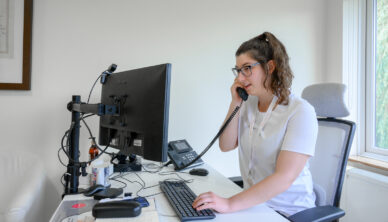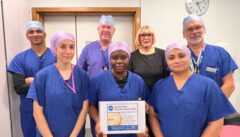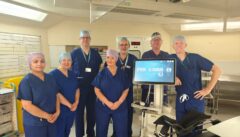Contents
Don’t Put Up With Period Pain

Around 80% of women experience period pain at some stage in life. For 20%, this can involve sustained bleeding known as menorrhagia, alongside the pelvic, or abdominal pain.
Mood changes, or anxiety are common symptoms, as is anaemia. Your sex life is diminished, social situations become a trial, with concerns about stained clothing, or carrying sufficient sanitary products.
There is a financial cost to coping with the condition, more so when this brings a need to take time away from work. Activities you would like to be part of become a problem, although this does not need to happen.
Causes Of Pain & Bleeding
In about half of cases, there is no specific cause, more a combination of hormonal influence, blood clotting and womb lining disfunction. In a smaller proportion of patients, thyroid issues, or inherited clotting problems are a cause.
There may be physical reasons for period pain, such as fibroids or polyps. Fibroids are common, non cancerous tumours of the womb, polyps are fleshy, benign outgrowths from the womb lining.
Endometriosis can be a contributor, where tissue similar to the lining of the uterus grows outside the uterus. The same applies to adenomyosis, a condition where tissue in the lining of the uterus grows into wall of the uterus.
A combination of any of these causes can apply in individual cases, careful assessment is required to provide effective solutions.
Diagnosis & Treatment
A consultant’s experience, a physical examination, a full medical history and your input on symptoms can be all that is required for diagnosis.
Where further investigation, or confirmation is needed, internal imaging through CT scans, MRI scans, or ultrasound will often help. In a few cases, samples may be taken for lab analysis.
An investigation called an hysteroscopy can identify issues and often treat them. A camera is used to look at your womb lining, with additional instruments allowing polyps or fibroids to be removed at the same time.
Hormonal or non hormonal medication can be prescribed, by tablet, injection, or using a hormone coil. The contraceptive pill can help to regulate periods, or non hormonal options if you are trying to conceive.
An hysteroscopy is often carried out under local anaesthetic. Whether using local, or general anaesthetia, other surgical options may involve day visits, or short stays:
- Myomectomy – Fibroids are removed by keyhole (laparoscopic) or open surgery, normally under general anaesthetic.
- Endometrial ablation – The womb lining is destroyed by electromagnetic waves, under general or local anaesthetic.
- Fibroid embolisation – The blood supply to fibroids is blocked by injecting particles into them, under anaesthetic.
- Hysterectomy – The womb is removed by keyhole, or open surgery. Pre menopause patients may wish to leave their ovaries.
None of the latter three are recommended if you plan to have children and a hysterectomy is in a sense the last line of treatment. Even so, under specialist care in a modern hospital, this is safe and effective.
Please Don’t Suffer
If period pain, or menstrual bleeding is interfering with your physical, emotional, or social life, this deserves to be taken seriously. The same applies to bleeding between periods, after sex, or after the menopause.
Don’t be afraid or too shy to speak to your GP. They can assess the problem and arrange treatment, such as an ultrasound scan to check for fibroids and polyps.
Where the condition requires specialist care, or surgery, they will usually refer you to a consultant gynaecologist. You can also ask to see a consultant if you have particular concerns.
Specialist units, such as our private gynaecology department are well equipped and run by staff who understand the issues period pain can bring. Please don’t feel you should suffer, there are ways to bring back normal life.
26 October 2023



